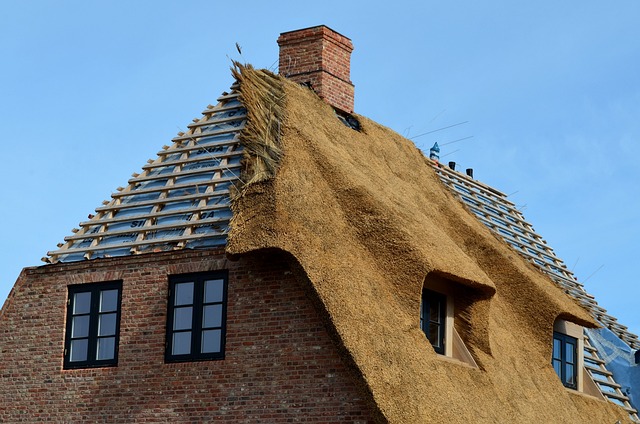Flat roofs, despite their low-maintenance appeal, face challenges like punctures, weather damage, and water pooling. Regular inspections are crucial for early detection of these issues, preventing extensive damage. Prompt action on signs of damage, such as punctures and leaks, is vital for maintaining structural integrity. Professional flat roof specialists use advanced tools to handle various damages, from leaks to structural concerns. Regular maintenance through annual inspections and timely component replacement prevents costly repairs. Estimating repair costs varies based on damage extent, materials, and labour rates; obtaining multiple quotes ensures optimal solutions.
Flat roofs are a popular choice for modern architecture, offering practical benefits and low maintenance. However, they are prone to specific damage types, from leaks caused by aging materials to punctures from falling debris or impact. Understanding these issues is key to maintaining your roof’s longevity. This comprehensive guide delves into various flat roof repair methods, covering everything from inspection techniques and necessary tools to step-by-step leak fixes and preventative strategies. Learn how to tackle common damage types and when to seek professional assistance for a durable, maintenance-free roof.
Understanding Common Flat Roof Damage Types
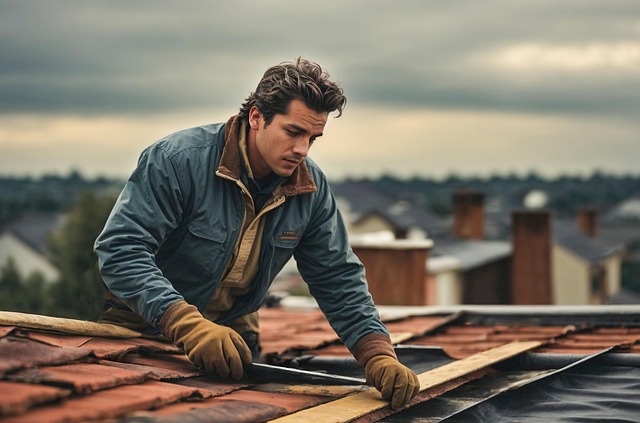
Flat roofs are a popular choice for many commercial and residential buildings due to their low maintenance requirements. However, just like any other roofing type, they are susceptible to various forms of damage over time. Identifying common types of flat roof damage is crucial for prompt repair and maintenance. One of the most frequent issues is punctures or tears in the roofing membrane caused by falling debris, construction equipment, or sharp objects. These can lead to leaks and water damage inside the building.
Another prevalent problem is the deterioration of the roof’s edges due to exposure to harsh weather conditions and UV rays. The corners and edges are particularly vulnerable areas that may require reinforcement or replacement over time. Additionally, poor drainage systems or improper installation can cause pooling of water on the roof, leading to damage from prolonged moisture. Regular inspections and prompt repair for any signs of damage are essential to ensure the longevity and integrity of flat roofs, thus preventing more extensive and costly repairs in the future.
Inspection: Identifying the Source of Damage
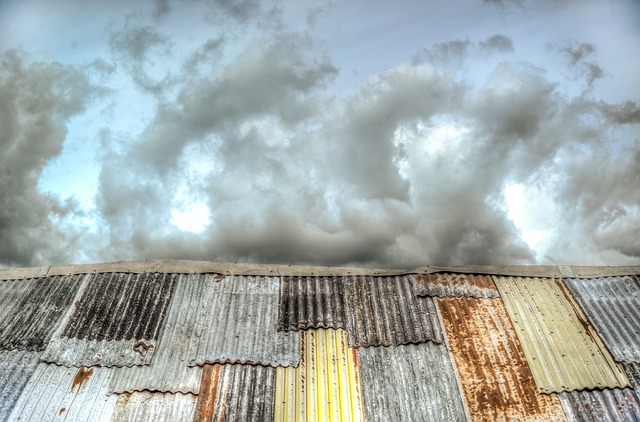
When addressing any flat roof damage, the first step is a thorough inspection to identify the root cause. This process involves meticulous examination of every inch of the roofing surface and underlying structure. Professionals skilled in flat roof repair will look for signs of water intrusion, missing or damaged shingles, loose underlayment, rusted or corroded fasteners, and evidence of previous repairs.
The source of damage is critical to determine because it dictates the most effective course of action for flat roof repair. For example, if the issue stems from a broken or blocked drain, proper drainage solutions must be implemented. Conversely, if the problem lies with loose or damaged shingles, replacement or reinforcement may be necessary to prevent further compromise.
Materials and Tools for Repair
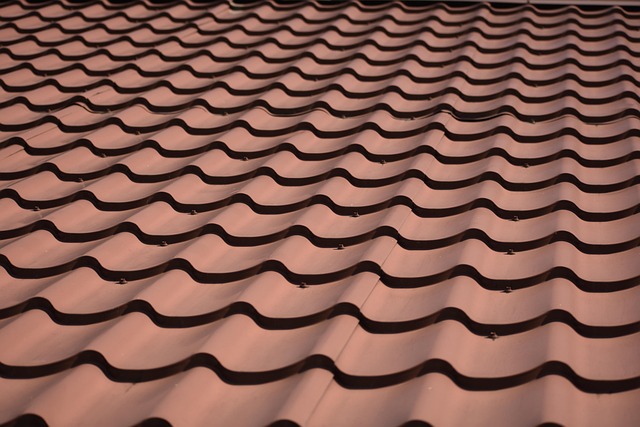
When it comes to repairing a flat roof, the right materials and tools are essential for a successful and long-lasting fix. For any flat roof repair project, you’ll need high-quality tar or modified bitumen sheets, which are commonly used for their durability and water resistance. These materials come in rolls and can be easily cut to fit the specific size and shape of your roof’s damage.
Additionally, a variety of tools will be required. A sturdy ladder is a must for accessing the roof safely. You’ll also need a roller or brush for applying the tar or bitumen evenly. A heat gun can help soften and melt the existing membrane, ensuring proper adhesion for the new material. For cutting and shaping, a sharp knife or scissors specifically designed for roofing is ideal. Finally, don’t forget safety gear, such as gloves and eye protection, to safeguard against potential hazards during the repair process.
Step-by-Step Guide to Fixing Leaks

Fixing leaks in a flat roof is an essential part of regular maintenance and can prevent further damage. Here’s a step-by-step guide to help you tackle this common issue. First, locate the source of the leak using methods like tracing water stains or utilizing diagnostic tools. Once identified, prepare the area by cleaning away debris and ensuring proper ventilation.
Next, you’ll need to repair or replace any damaged or missing shingles or flashing. Use high-quality materials suitable for flat roofs, such as synthetic or metal underlayment. Apply a waterproof membrane or sealant to reinforce the leak-prone areas. Finally, thoroughly clean the roof surface after the repairs and consider scheduling regular inspections to prevent future leaks in your flat roof.
Addressing Puncture and Impact Damage
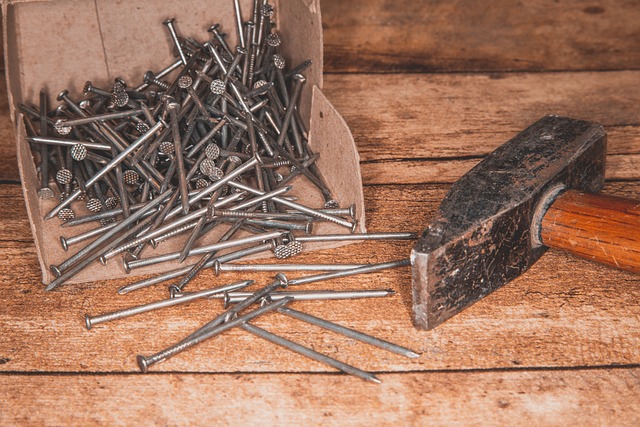
Puncture and impact damage are common issues with flat roofs, often caused by falling debris, construction equipment, or sharp objects. The first step in addressing these problems is to locate the source of the puncture. It’s crucial to inspect the roof thoroughly, as these damages can be difficult to detect from the ground level. Once identified, small punctures can be repaired using specialized patches designed for flat roofs. These patches are typically made from durable materials that can withstand environmental conditions and provide a strong, long-lasting repair.
For larger impact damage or multiple punctures, professional flat roof repair services should be considered. Skilled technicians use advanced techniques and materials to ensure the damaged area is fully restored, preventing further leaks or structural weaknesses. Regular maintenance checks can also help in catching these issues early, making repairs more straightforward and cost-effective.
Preventative Measures for Longevity

Regular maintenance is key to prolonging the life of a flat roof. One of the best preventative measures is routine inspection, allowing for early detection of any issues like missing or damaged shingles, cracks in the membrane, or signs of leaks. Prompt repair of these minor problems can prevent further damage and costly renovations down the line.
Additionally, using high-quality materials during installation and regularly sealing joints and edges can significantly enhance the roof’s durability. Ensuring proper drainage by keeping gutters clear and installing edge strips also plays a crucial role in preserving the integrity of flat roofs, preventing water damage and prolonging their overall lifespan, thereby reducing the need for frequent flat roof repair services.
When to Call in Professional Help

If your flat roof is showing signs of damage, it’s crucial to act swiftly to prevent further complications. While some minor issues can be addressed with DIY repairs, more extensive or complex problems often require professional intervention. Flat roof repair specialists have the expertise and tools to assess and fix a wide range of damages, from leaks and punctures to structural weaknesses.
Timing is essential; waiting too long can lead to bigger problems and costly repairs. Regular inspections are recommended, especially for older roofs, as they can help identify issues early on. If you notice water stains, missing or damaged shingles, cracks in the membrane, or signs of mold growth, it’s time to call in professionals. They will provide expert advice, offer lasting solutions, and ensure your flat roof is safely repaired and protected.
Cost Estimates and Maintenance Tips

Estimating the cost of flat roof damage repair can vary greatly depending on several factors, including the extent of the damage, materials used, and local labour rates. It’s important to get multiple quotes from reputable roofing contractors to understand the range of prices for your specific situation. Some common issues that drive up costs include missing or damaged shingles, structural weaknesses, and extensive water leakage. Regular maintenance is key in preventing these costly repairs. Annual inspections can help identify minor issues early on, while timely replacement of worn-out components can extend the lifespan of your flat roof. Keep an eye out for signs of damage like cracks, blisters, or discolouration, and address them promptly to avoid more severe—and expensive—problems down the line.
